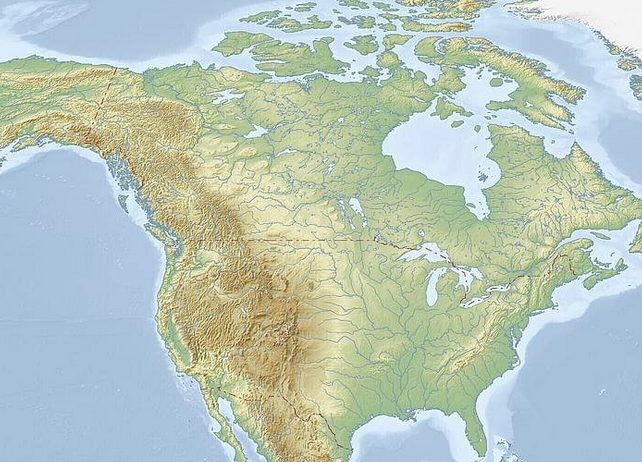Unmasking the Theocratic Foundations of a Nation Built on Exclusion
Before it was called America, this land was known to many of its original nations, including the Anishinaabe, Haudenosaunee (Iroquois), Lenni Lenape, and many others, as Turtle Island. This world was shattered by the arrival of Christian colonizers, who did not bring freedom they brought the “White Death.”
Upon arrival, Europeans introduced smallpox, influenza, measles, and other pathogens to which Native populations had no immunity. These diseases acted as a relentless biological vanguard, wiping out entire communities years before many settlers even set foot inland. Crucially, the colonizers knew these diseases intimately. They recognized the symptoms the fevers, the pustules, the coughing and they understood basic protocols for quarantine and care that had evolved in Europe over centuries. Yet, they stood by and watched as millions died, interpreting the devastation not as a preventable tragedy but as a deliberate act of their God.
We are often told a different story of America’s founding: a beacon of religious freedom, a shining city on a hill open to all. This is a powerful narrative, but it is a carefully constructed myth designed to obscure this much darker, more truthful origin story. Turtle Island was not founded on freedom for all—it was founded as a project of Christian colonialism, and its modern identity, the “United States of America,” remains deeply shaped by this exclusionary and genocidal genesis.
Long before “e pluribus unum” was etched onto its coins, the colonial project was one of “ex uno, plures” out of one (faith), many are subjugated. The evidence is not hidden; it is etched into the very charters and laws of the original thirteen colonies.
As the historical record shows, the majority of these colonies were explicitly founded as Christian theocratic enterprises:
-
Virginia, the first successful colony, had the Church of England as its official, state-sponsored religion. Dissenters could be fined, jailed, or worse.
-
The Massachusetts Bay Colony was established by Puritans (Congregationalists) who sought the freedom to practice their own strict form of Protestantism—and theirs alone. Heretics like Anne Hutchinson and Mary Dyer were banished or executed for challenging doctrine.
-
Maryland, often mistakenly cited as a haven for religious freedom, was initially a tolerant refuge for Catholics. However, by the time of the Revolution, its official established church was the Anglican Church, which persecuted both Catholics and dissenting Protestants.
This pattern is undeniable. The charters of these colonies were not secular documents; they were licenses for Christian expansion, granted by Christian monarchs, to establish Christian outposts. The “freedom” they sought was the freedom to impose their own beliefs, not the freedom for all beliefs to coexist.
The Mayflower Myth: Divine Providence and the “White Death”
The iconic story of the Pilgrims’ “First Thanksgiving” perfectly illustrates this colonial mindset. The Pilgrims arrived in 1620 and settled on the land of the Patuxet tribe. They did not find a thriving community because the Patuxet had been almost entirely wiped out by a devastating plague (likely smallpox or leptospirosis) between 1616 and 1619.
This is the crucial context that the myth omits:
-
They Knew the Land Was Cleared: The Pilgrims found abandoned villages and fields already cleared for planting (which they took). They knew a great tragedy had befallen the people who lived there before them.
-
They Interpreted it as Divine Providence: The Pilgrims did not see this catastrophe as a random tragedy. They saw it as the hand of God clearing the land for them, His chosen people. They believed it was a sign of God’s favor and their divine right to the land.
William Bradford, the Governor of Plymouth Colony, wrote in his journal, Of Plymouth Plantation:
“Besides, what could they see but a hideous and desolate wilderness, full of wild beasts and wild men… For summer being done, all things stand upon them with a weatherbeaten face, and the whole country, full of woods and thickets, represented a wild and savage hue.” … [They found] bones and skulls of the dead lying about where their houses and dwellings had been. “But by the goodness of God, this plague produced a wonderful effect for the English.”
He was not alone. This view was a common justification for colonial expansion:
-
John Winthrop, Governor of the Massachusetts Bay Colony, coldly noted in 1634 that the smallpox epidemic had killed so many Natives that “the Lord hath cleared our title to what we possess.”
-
The influential Puritan minister Cotton Mather celebrated the same devastation in his writings, stating that the woods had been “cleared of those pernicious creatures, to make room for a better growth,” and called the plague a “wonderful” act of God that paved the way for Christianity.
-
Colonist Daniel Denton, writing in 1670, casually observed that God had made way “for the quiet settlement of the English” through the mass death of the original inhabitants.
Another colonist, Thomas Morton, wrote that the land was “so riddled of the Indians by a great plague that happened among them that Christ (who is the only Savior of his people) has now made room for the English to plant.”
Conclusion: What the Colonizers Knew
-
Did they understand germ theory? No. They had no scientific concept of viruses or immunity.
-
Did they know European diseases were killing Native Americans en masse? Absolutely yes. They witnessed the results firsthand and had practical knowledge of the diseases.
-
Did they see this devastation as a negative? No. They interpreted it as a deliberate, positive act of their Christian God to remove the Native population and grant the land to them.
So, while the Pilgrims at the “First Thanksgiving” may not have been actively handing out infected blankets in 1621, their entire survival and the feast itself were made possible by a genocide caused by European diseases—a genocide they celebrated as a miracle.
The Documented Evidence of Intentional Biological Warfare
The transition from seeing disease as divine providence to wielding it as a deliberate weapon is not speculative; it is a matter of historical record. The most infamous and well-documented case comes from the British during the Siege of Fort Pitt (Pennsylvania) in 1763 (Pontiac’s War), which exposes a calculated military strategy.
-
William Trent’s Journal: The militia captain at the fort recorded the event in his own hand on June 24, 1763:
“[We] gave them two Blankets and a Handkerchief out of the Small Pox Hospital. I hope it will have the desired effect.”
This primary source is a direct, chilling admission of intent. -
The Invoice: Trent later submitted an invoice to the British authorities for the items used, which included:
“To Sundries got to Replace in kind those which were taken from people in the Hospital to Convey the Smallpox to the Indians Viz: 2 Blankets & 1 Silk Handkerchief…”
This financial record proves the event was not an isolated act but a planned tactic with official reimbursement. -
Commanding General’s Correspondence: Sir Jeffery Amherst, the British Commander-in-Chief, wrote to Colonel Henry Bouquet:
“Could it not be contrived to send the Small Pox among those disaffected tribes of Indians? We must on this occasion use every stratagem in our power to reduce them.”
Bouquet replied:
“I will try to inoculate the [Native groups] with some blankets that may fall into their hands, and take care not to get the disease myself.”
This exchange between high-ranking officials removes all doubt: the use of smallpox was a discussed, approved, and implemented stratagem of war and expansion.
This 1763 incident proves that the “advantage” of disease was not just a passive benefit but was later understood well enough to be deployed as a deliberate, calculated weapon of genocide.
This colonial mindset did not simply vanish in 1776. It evolved into the core belief of Manifest Destiny, the divine, Protestant right to expand westward, a doctrine that continued to justify the genocide of Native populations and the theft of their land, all under a Christian god.
A country based on one religion’s worldview must, by its nature, erase others. It hides behind the false propaganda of being “open to other cultures and ideas,” but in practice, it kills, colonizes, and assimilates. The local populations of Turtle Island were not incorporated; they were nearly exterminated through warfare and disease, their children stolen into boarding schools designed to “kill the Indian, save the man.” Their spiritual practices were outlawed. Enslaved Africans were brutally stripped of their religions and cultures, forced to convert to the faith of their oppressors.
The legacy of this Christian colonial foundation is not a historical relic. It is alive today in:
-
Biological Warfare and Deceit: The pattern of introducing a crisis (disease) and offering a self-serving “solution” (conversion and assimilation) is a cornerstone of the colonial playbook that continues in modern policies.
-
Systemic Poverty: Indigenous communities remain on the margins of the society built on their land, facing generational trauma and engineered neglect.
-
Cultural Erasure: The ongoing fight to protect sacred sites from pipelines and development is a direct continuation of the war for the soul of the land.
-
Legislated Morality: Laws that seek to impose specific Christian beliefs on a diverse populace are the modern equivalent of the original established churches, forcing assimilation into a single worldview.
-
The Myth of a Christian Nation: This rhetoric is the propaganda arm of this legacy, relegating non-Christians to second-class status and whitewashing a history of conquest.
To call the United States a “christian colonial state” is not an opinion; it is a historical fact. Recognizing this truth is the first step toward genuine decolonization. It is the first step toward honoring the original cultures of Turtle Island and building a future that is truly for all peoples, with equality of all people and respect for all cultures. The myth of a pluralistic founding must be dismantled so that a truly equal future can finally be built.
Join the conversation. Share your stories. How have you seen the legacy of christian colonialism play out in your community?
THE PEOPLEIZE TEAM
info@peopleize.world





